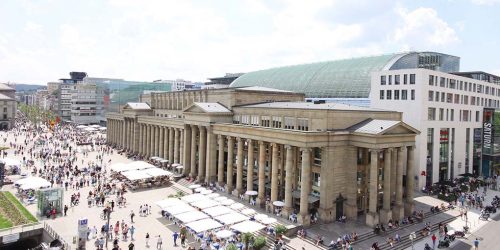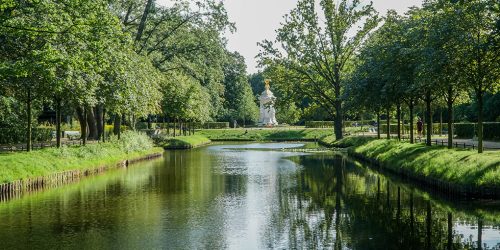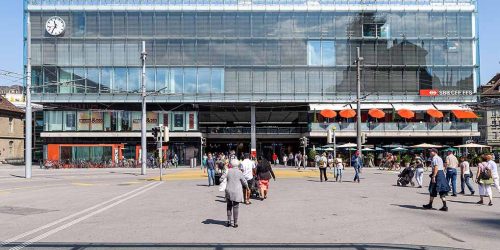A Half-Day Stroll Through Zurich’s Old Town: Wandering the Streets Amid Bell Chimes and Books
Switzerland’s mornings always carry a sense of stillness, and Zurich’s old town is the gentlest part of that calm. At around eight in the morning, with a steaming latte in hand and the warmth of last night still lingering, I stepped out of my accommodation. Already, I could hear the chimes of a distant clock tower piercing through the morning mist, merging with the faint scent of coffee in the air—and waking me into a slow-paced journey.
I began at Lindenhof hill, following one of the city’s oldest cobblestone lanes, wandering downward into the heart of Zurich’s old town—a cultural labyrinth of bell towers, churches, bookstores, cafes, and centuries-old stone houses. This half-day walk had no fixed itinerary, no pressing destination. Every stop was a whispered conversation with the city.
1. Lindenhof Hill: The Quietest High Point in the City
Lindenhof Hill might be my favorite spot in Zurich. From its summit, the entire old town spreads out before you, with bird songs and city bell chimes blending in harmony, making you naturally slow your pace. Known as the oldest residential site in Zurich, its roots trace back to the Roman Empire, yet today it serves as a tranquil space shared by citizens and travelers alike.
I settled on a wooden bench, gazing at the Limmat River and the twin spires of Grossmünster across the bank. Slanted sunshine brushed stone walls and shaded pathways. A child darted past; an elderly woman walked her small dog. Joggers passed quietly, headphones in, while a young couple shared breakfast on the lawn. It was a scene where past and present seemed to coexist without tension. No loud voices, no flashing lights—just the rhythm of life as it always has been. This was a scene that needed no camera—it was deeply etched into my memory, a portrait of stillness atop the city’s pulse.
2. Niederdorfstrasse: A Time Tunnel Across Centuries-Old Cobblestones
Departing from Lindenhof, I meandered onto Niederdorfstrasse. This street is the soul of Zurich’s old town and the main thread of today’s half-day journey. Its unpolished cobblestones are flanked by medieval buildings featuring wooden window frames and wrought-iron balconies. On the ground floors are bookstores, small taverns, antique shops, and chocolate boutiques.
Street musicians were playing Schubert’s “Serenade” on a cello, its melody like silk threads guiding me into a small independent bookstore called “Buchhandlung zum Zytglogge.” Though compact, the shop felt like a spiritual library. The white-bearded owner was carefully organizing a French poetry volume. Books were stacked floor to ceiling, interspersed with postcards, bookmarks, and notes from previous visitors. When I asked for Zurich literature recommendations, he handed me a copy of Hermann Hesse and Zurich, smiling: “This isn’t a travel guide, but it will tell you how this city nourishes words in silence.”
I purchased the book and sat in a neighboring cafe, savoring an espresso in the morning sun while reading. The cafe’s brass lamps and marble-top tables made time feel irrelevant. In that moment, I felt like a nineteenth-century traveler, quietly sipping coffee and absorbing the fragrance of words, letting the city unfold one sentence at a time.
3. Grossmünster: The Legend of the Bell Chimes Up High
Heading north along Niederdorfstrasse, across the Limmat River stood Grossmünster, its twin towers rising solemnly. Legend has it that Charlemagne ordered its construction; today, it is Zurich’s most iconic landmark. The bell towers stand guard, marking countless mornings and evenings with their tolls.
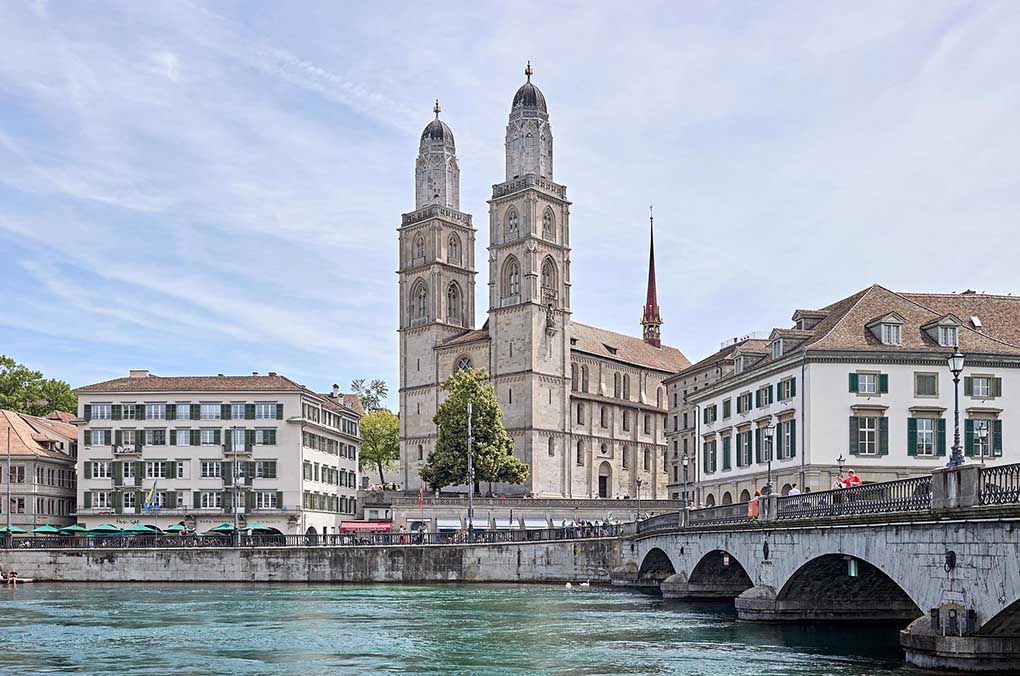
I bought a ticket and ascended the narrow, steep spiral staircase. Each step felt like a dialogue with history. At the summit, I looked out over red-tiled roofs and the distant Alps glistening in sunlight. Inside the tower hung ancient bronze bells—the heartbeat of Zurich for centuries. The guide told me that to this day, they are still rung manually on the hour, maintaining the city’s link to tradition.
Even more touching than the bells was the light through the stone windows, casting mottled patterns on the floor like a natural painting. I captured the delicate scene with my camera and committed the gentle time travel to memory.
4. Limmat River Left Bank: Walking Between Bridges in Poetic Reflection
Descending Grossmünster, I crossed Münsterbrücke onto the left bank of the Limmat River. The water was a polished mirror reflecting church spires and drifting clouds. This riverside path, lined with elegant iron railings and uniform trees, invites peaceful promenade. Across the water, old houses stand serenely, each like an elder quietly watching the flow.
I lingered on Rathausbrücke, a bridge connecting to Zurich’s town hall. From there, I saw water flowing slowly from Lake Zurich into the city, winding among buildings before moving north. At dusk, the sunlight filtered through the bridge’s arches, casting golden-orange streaks on the water that were mesmerizing.
Leaning on the railing, I watched a girl cycling by as the distant clock chimes and a street musician’s guitar melody drifted in. In that moment, I felt less like a tourist and more like a breathing part of the city.
5. St. Peter’s Church and Europe’s Largest Clock Face
Turning down a narrow, quiet alley framed by ivy-covered walls and centuries-old windows, I arrived at St. Peter’s Church. Its architecture was humble compared to Zurich’s grander cathedrals, but what caught my breath was the enormous clock face on its tower—measuring 8.7 meters in diameter, it is the largest in all of Europe. The golden hands and Roman numerals glinted under the morning sun, visible from nearly every corner of the old town.
Inside, the church exuded a serene simplicity. No frescoed ceilings or opulent altars interrupted the pure stillness. I sat in a smooth wooden pew, where light filtered through tall arched windows and pooled onto the stone floor. The subtle scent of aged wood and candle wax created an almost meditative atmosphere—a perfect place for reflection.
Just as I exited through the heavy wooden door, the hour struck. Deep, measured bells echoed through the quiet alleys, cascading over the rooftops. In that moment, it felt as if the entire old town paused, gently reminded of its enduring faith and timeless rhythm.
6. Stationery Shops, Candy Stores, and Handcrafted Delights
Continuing westward, away from the central crowds, I ventured into the charming alley of Spiegelgasse. Though quieter than the main streets, it pulsed with understated magic. Tucked between stone façades was a shop called “Papeterie Weiss”—a treasure trove of handmade journals, parchment paper, quills, and wax seal stamps. The scent of pressed paper filled the air, and the soft rustle of pages made it feel like a sanctuary for anyone who treasures the written word. I selected a small journal bound in recycled paper, its texture rough and honest—just right for capturing the day’s reflections.
A few steps down, I stumbled upon a petite candy shop whose windows were filled with an array of artisanal Swiss sweets. Inside, glass jars gleamed with lemon drops, marzipan roses, and sugar-dusted berries. The elderly shopkeeper welcomed me with a warm smile and offered a mint-chocolate truffle. It melted instantly, leaving a cool sweetness that lingered on my tongue. I bought a box, not just as a souvenir, but as a way to hold onto the joy tucked into this quiet alley—a reminder that even the smallest streets can offer the most lasting memories.
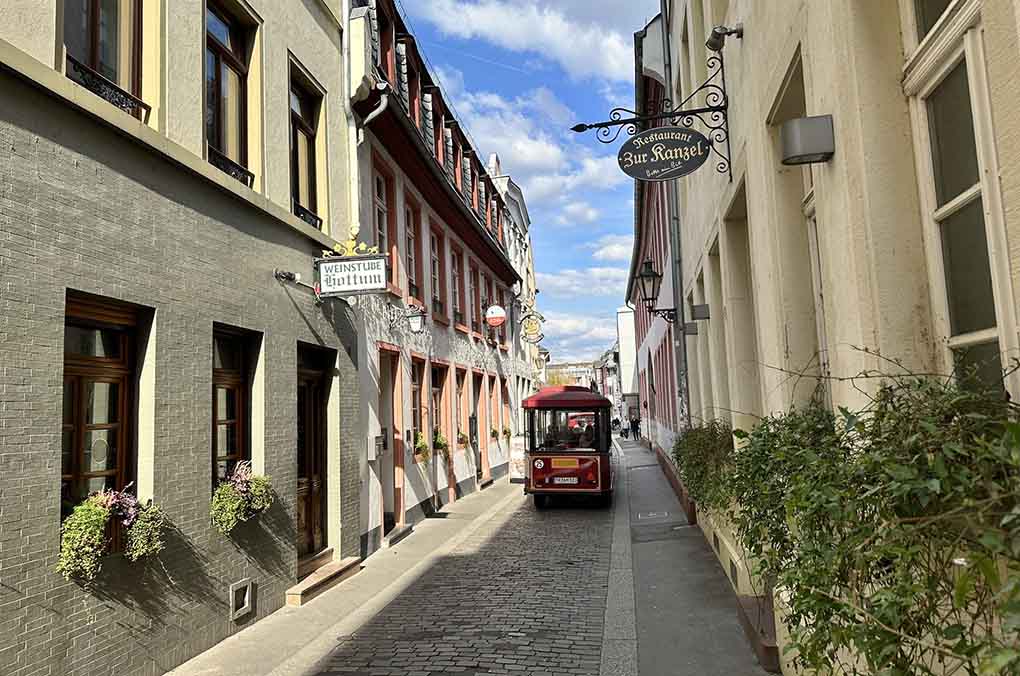
7. Reflecting Along a Path Hermann Hesse Once Walked
Walking through Rindermarkt square, I found a cafe named after Hermann Hesse. He once lived here, and Zurich was important to him. Inside, his books and portraits filled the space. I ordered a black coffee and opened one of his essays:
“A city’s soul is not in its possessions, but in whether you can hear its heartbeat in the streets and alleys.”
That sentence felt written just for me at that moment. I reentered the street, glanced back at the clock tower, and watched the slanted light transform time into a quiet film on the city’s face.
8. Memories and Farewells in Zurich’s Old Town
Half a day’s walk wasn’t long, but enough to forge a profound connection with Zurich’s old town. This place lacks commercial hustle yet possesses everything that moves the heart: bell chimes, book fragrances, cobblestones, venerable window frames, and friendly glances.
My journey concluded back at Lindenhof Hill. Bathed in sunlight, the old town lay before me like a serene painting. As I closed Hesse’s essay, I tucked it into my bag alongside my memories.
Some cities demand speed—quick sightseeing and fast snapshots. But Zurich’s old town is meant to be measured in footsteps, heard with ears, and felt with the soul. The chimes still ring on time, the scent of books still lingers at street corners, and with half a day’s time, I entered the gentlest depths of this city’s spirit.
If you long for a long-lost sense of tranquility and refinement, take a half day to wander this old town. Amid bell chimes and the scent of books, walk the streets. You’ll find it’s not just a journey. It’s a tender dialogue with yourself and the world.

